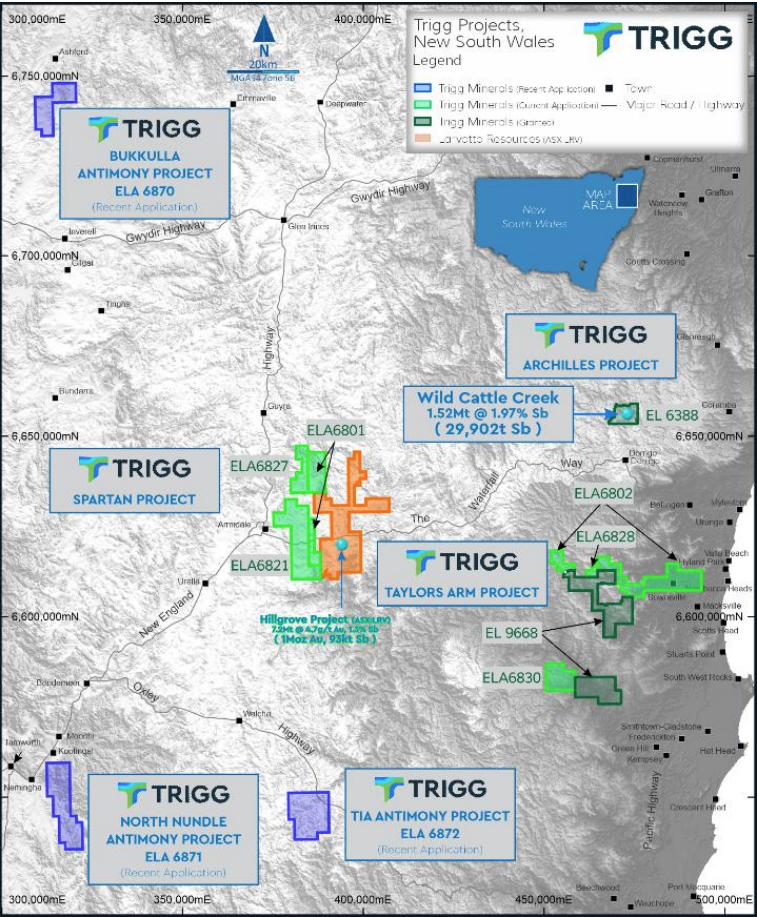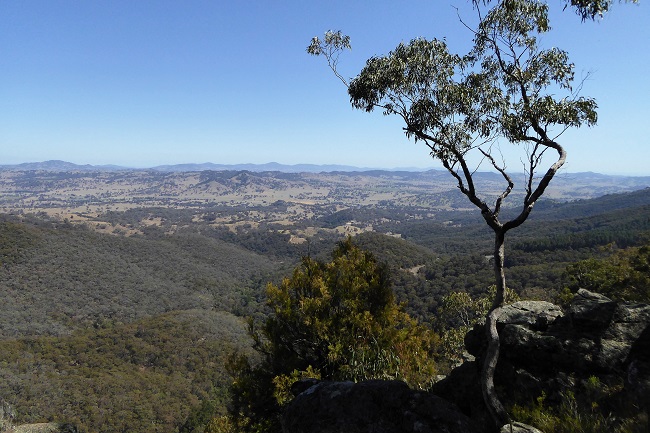Trigg’s technical team has evaluated the New England region, identifying these areas as promising targets based on geological data and historical exploration. Once approved, Trigg intends to launch systematic exploration programs, incorporating geophysical surveys, geochemical sampling, and drilling campaigns to assess the mineral potential of these projects.
Historic Bukkulla Mine Workings
Historical workings extend 18 metres deep and 9 metres along strike, following an intrusive-related or meta-hydrothermal vein associated with the nearby Bundarra Plutonic Granitoid.
Situated at 310775mE, 6739344mN (AMG84, Z56), the site features a substantial waste dump containing stibnite-bearing veins hosted in altered Texas Beds. Sampling of massive stibnite and gangue (Analysis G94/48) returned assay results of 0.106 g/t Au, 47 g/t Ag, 22.9% Sb, and 1,300 g/t As³.

Antimony Potential in the Nundle Goldfield
The Nundle Goldfield, one of New South Wales’ most historically significant gold-producing regions, also holds untapped potential for antimony mineralisation. While best known for its rich gold deposits, the area’s geological setting suggests strong prospectivity for antimony, particularly in association with quartz-sulphide veining and shear-hosted mineralisation.
Geological Context
The Nundle Goldfield lies within the New England Fold Belt, a region with a well-documented history of gold and base metal mineralisation concentrated along the Peel Fault. Antimony (Sb) is commonly found alongside gold in epizonal orogenic systems, often occurring as stibnite (Sb₂S₃). Given that many historical goldfields in northeast NSW also host high-grade antimony deposits—such as Hillgrove and Trigg’s Wild Cattle Creek deposit—there is strong potential for similar mineralisation at Nundle.
Historical Indicators
- Past-Producing Antimony Mines: The presence of Fogarty’s, Woodly’s, and Stanning’s antimony mines within the Nundle Goldfield provides direct evidence of significant antimony mineralisation in the region.
- Gold-Antimony Association: In many NSW deposits, gold and antimony occur together, with high-grade stibnite commonly found in quartz veins carrying gold.
- Limited Modern Exploration: Despite its historical significance, the Nundle Goldfield has seen little systematic exploration for antimony, meaning substantial mineralisation could remain undiscovered.
Exploration and Future Potential
With modern exploration techniques—including geophysical surveys, geochemical sampling, and targeted drilling—Trigg can define new high-grade antimony targets at Bukkulla and within the Nundle Goldfield. Key factors supporting this potential include:
- Favourable Structural Settings: Shear zones and fault systems known to host antimony in similar geological environments.
- Historical Mining Activity: Past workings may provide clues to undiscovered extensions of mineralised systems.
The Bukkulla and Nundle Projects represent a promising yet underexplored opportunity for high-grade antimony mineralisation. With no modern exploration conducted, Trigg is well-positioned to unlock the field’s antimony potential through systematic exploration, potentially adding significant value to its expanding NSW antimony portfolio.


